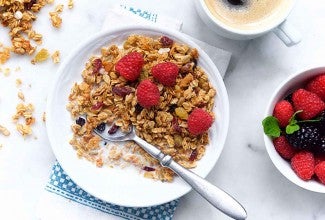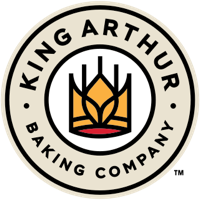We tested: One surprising ingredient is the best way to get granola clusters
It's probably already in your pantry!
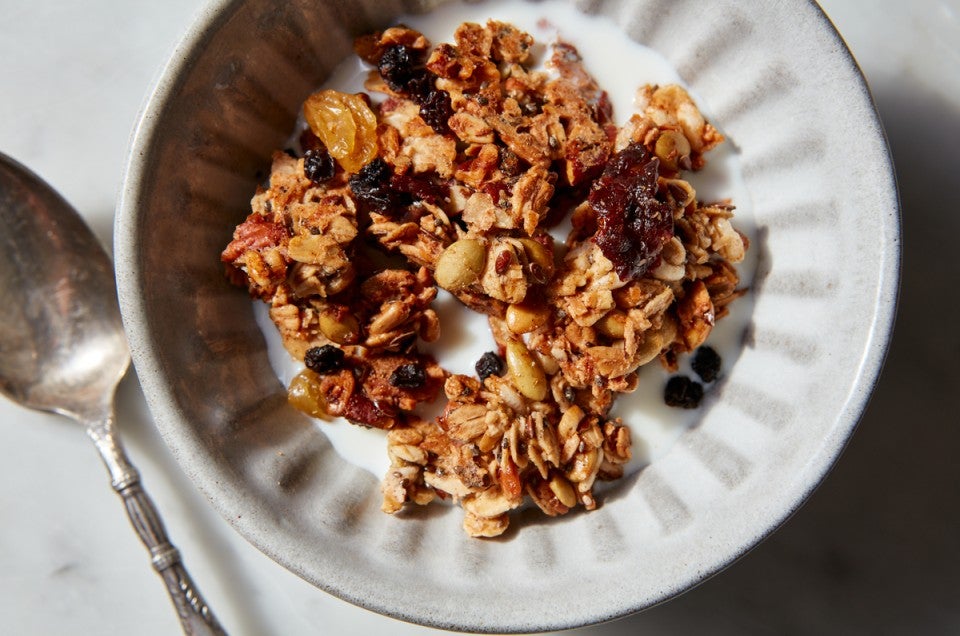

Making homemade granola is easy — just stir together oats, nuts, and seeds with a sticky-sweet coating, spread it onto a baking sheet, and bake until the mixture crisps, browns, and smells toasty. But coaxing a batch of granola to form those satisfyingly crunchy clusters that make it so irresistible? That takes a bit more finesse. From adding viscous ingredients like egg white, peanut butter, or sourdough discard to stirring in binding agents like all-purpose flour or almond flour, there are multiple methods for creating granola clusters. But which one works the best? We tested some of the most popular methods to find out.
Control recipe: Crunchy Granola. This recipe is simple and straightforward, following a standard granola template: oats, nuts, seeds, and wheat germ mixed together with oil and maple syrup.
Sourdough discard: 1/2 cup (140g) of sourdough discard added to the wet ingredients
All-purpose flour: Half of the wheat germ in the recipe is replaced with all-purpose flour
Almond flour: Half of the wheat germ in the recipe is replaced with almond flour
Egg white: 2 large egg whites added to the wet ingredients
Peanut butter: 1/2 cup (135g) natural peanut butter added to the wet ingredients
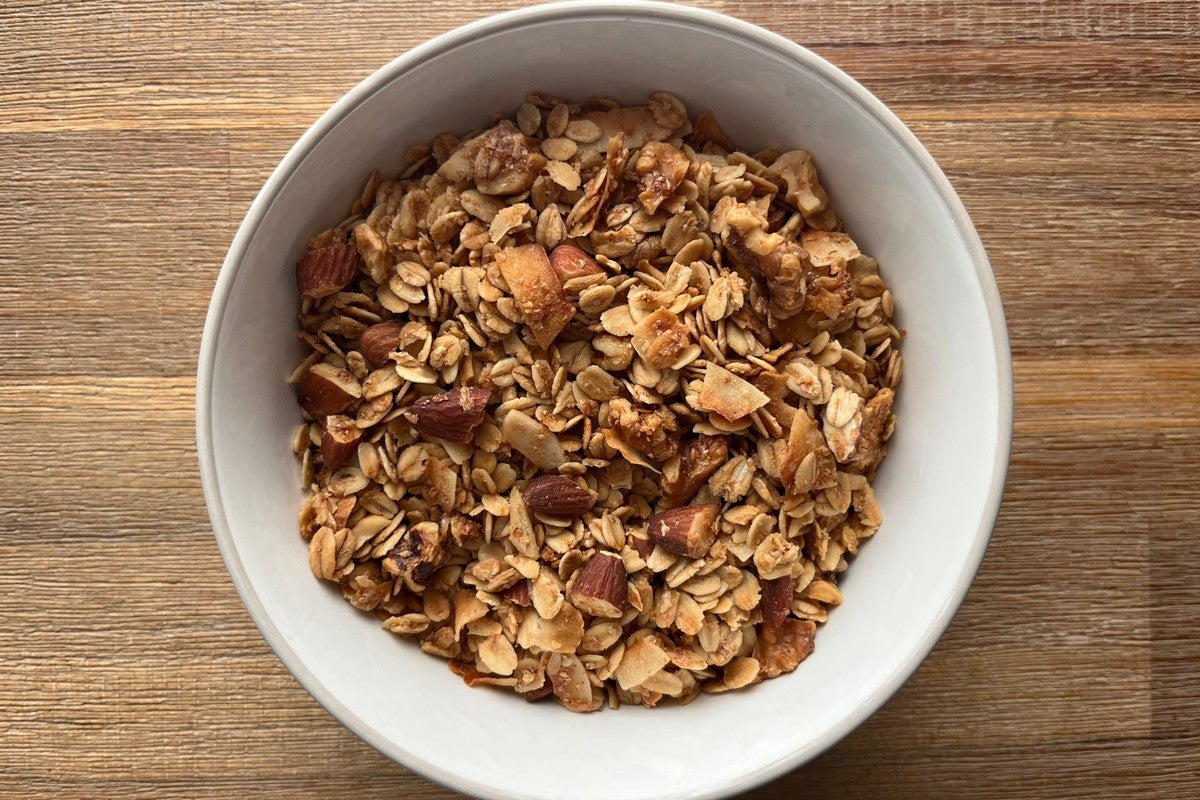
The Crunchy Granola recipe made an excellent control because, on its own, it did not create many clusters. For each test, I changed one ingredient — adding either a dry or wet element — to assess if it made a difference in the number and size of granola clusters.
Each test — including the control — was baked for 90 minutes at 250˚F (121˚C) and stirred once halfway through baking. The original recipe recommends stirring every 15 minutes, but moving the ingredients around breaks them apart and discourages clusters from forming, so I kept stirring to a minimum. The granola batches were allowed to cool completely on the baking sheets before I removed the granola.

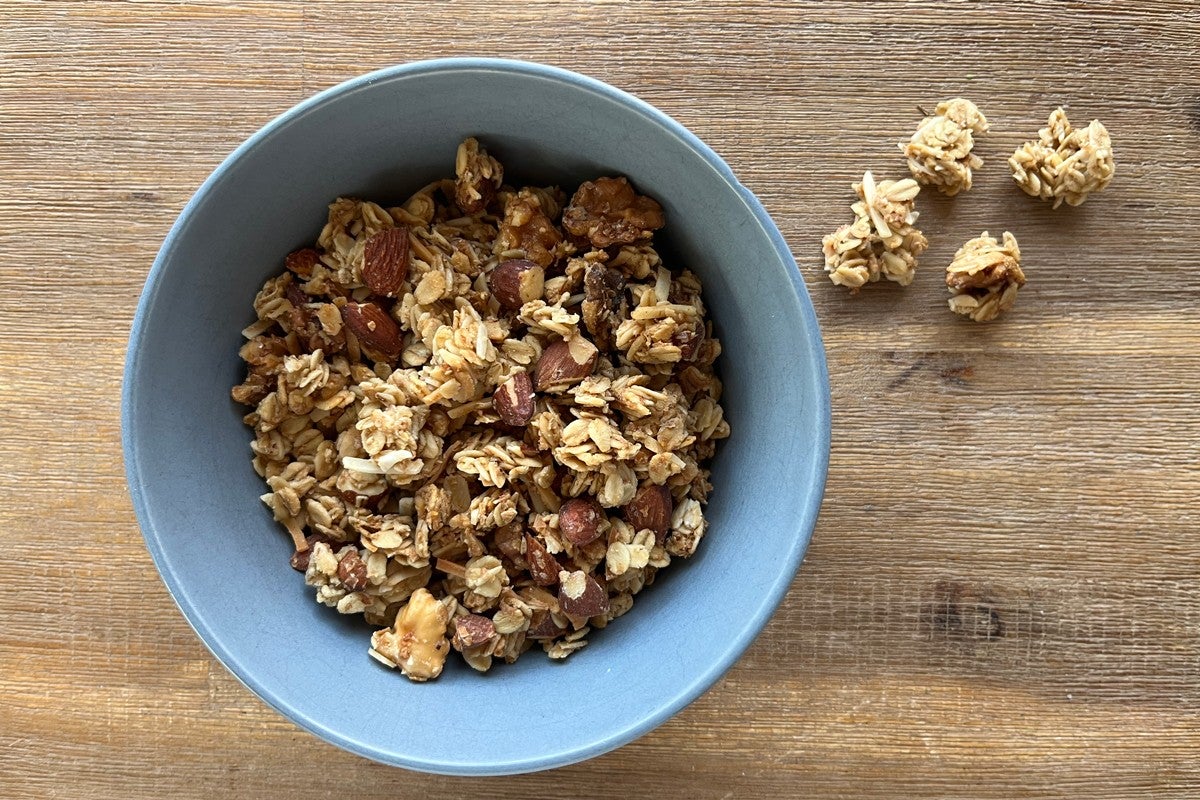
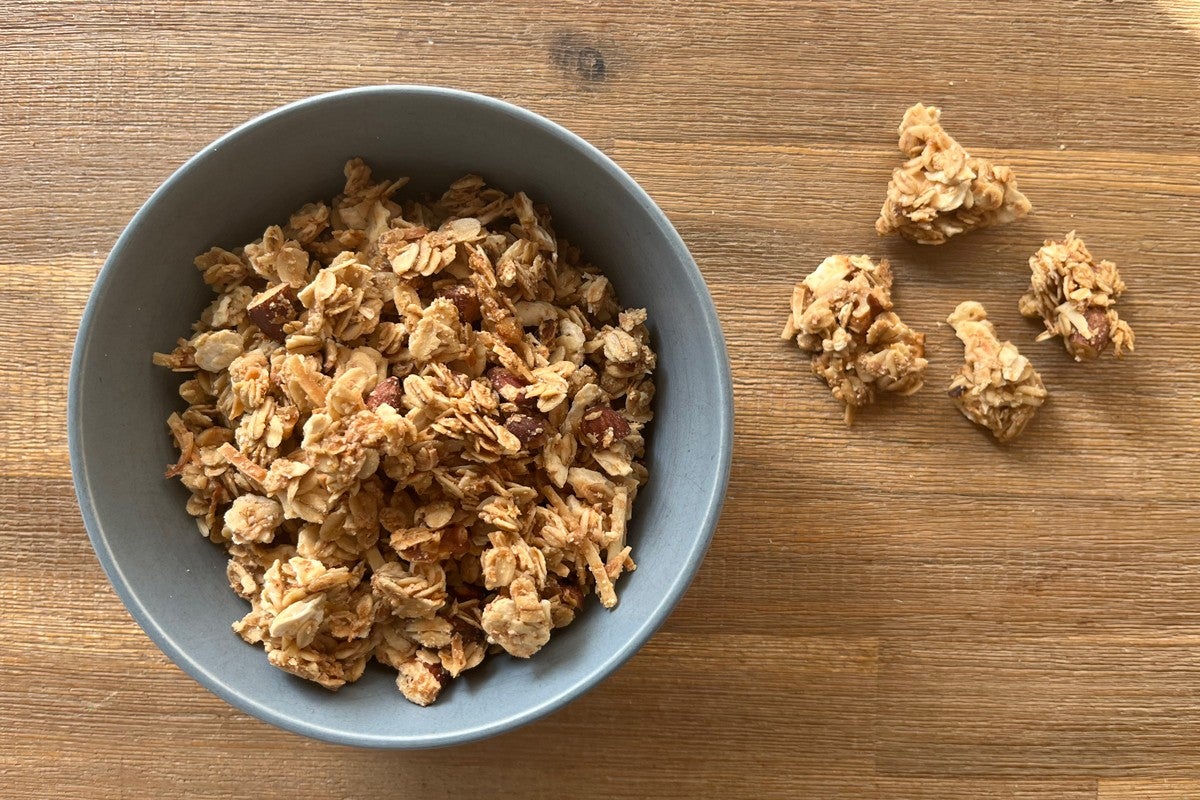
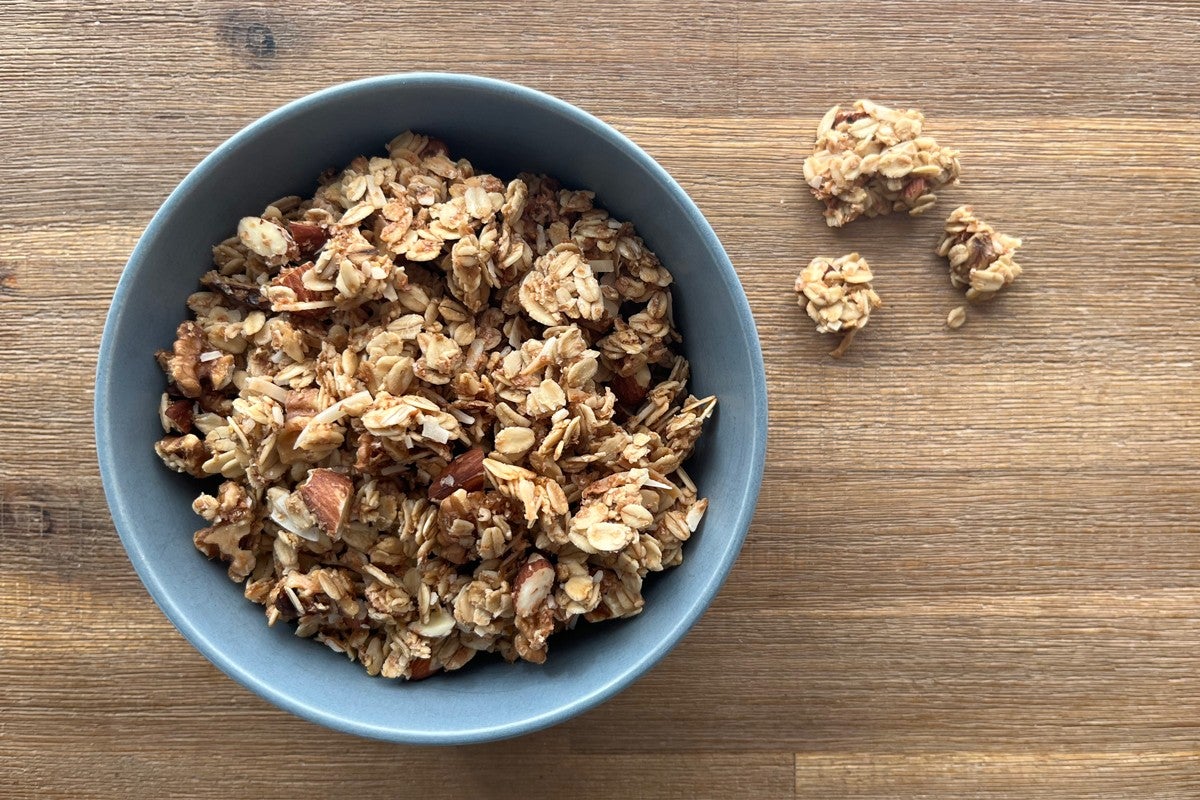
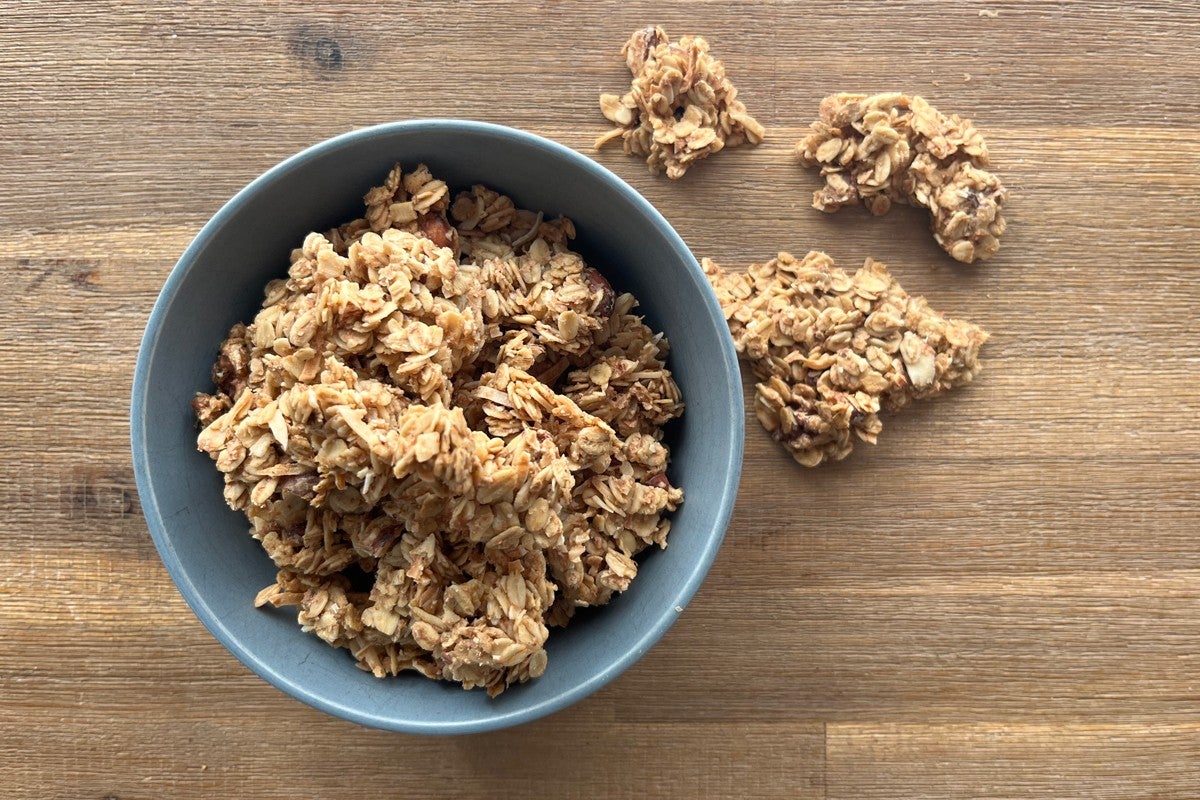
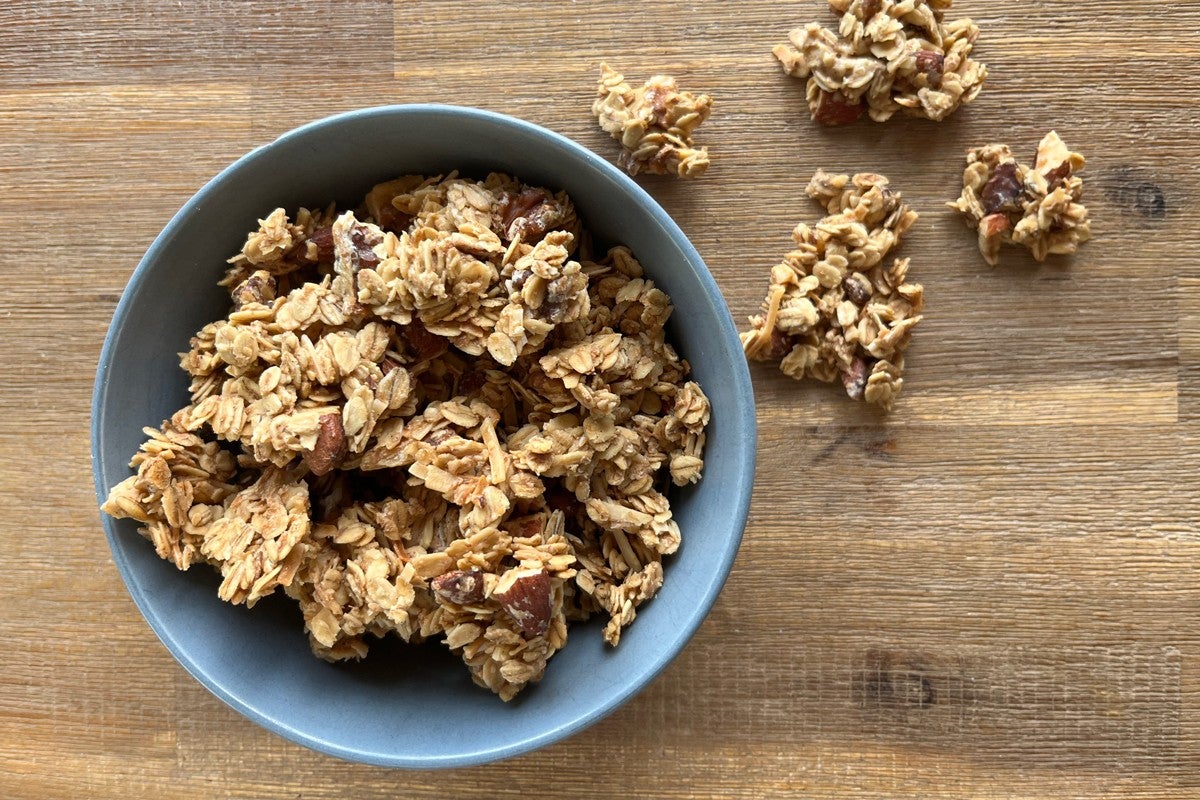
All of the tests, including the control, produced tasty granola. But there was a noticeable uptick in cluster formation from adding almond flour or egg white, and we noticed another significant leap in the size and amount of clusters when we added peanut butter or all-purpose flour. Here’s how they stacked up, from least to most clusters:
Control: The granola baked up crispy and golden brown but was mostly loose and cluster-less.
Sourdough discard: Surprisingly, adding sourdough discard did not significantly change the granola’s overall flavor, but the added liquid did help a bit with clump formation. This batch included a handful of small clusters, about 3/4" to 1" in diameter.
Almond flour: The addition of almond flour lent a bit of extra nutty flavor to the granola, and helped generate a moderate number of clusters that ranged between 1” and 2" across.
Egg white: This granola was evenly clustered throughout the batch. But the individual nuggets, which were about 1" across, were fragile and fell apart easily.
Peanut butter (recommended): Adding peanut butter helped the granola clump into large plates that had to be broken up into smaller pieces. The individual granola bunches were a whopping 6” to 7" across — larger than any other method. But the peanut butter gave the granola a slightly chewy texture and left some chalky residue behind after baking.
All-purpose flour (most recommended): Adding all-purpose flour gave the granola a hint of extra-toasty flavor. But more importantly, it was quite effective in binding the ingredients together to form an impressive number of sizable granola clusters, ranging from 2" to 4" across. After cooling, the granola had the vibe of a crispy granola bar that had been broken up.

From a clustering standpoint alone, adding peanut butter proved the superior method. The sticky nut butter helped fuse the other ingredients together and create large, craggy clusters. That said, the peanut butter granola was noticeably chewier than the others, and it had a slightly chalky mouthfeel that some people might find off-putting.
For effective cohesion without any textural downsides, adding all-purpose flour was the winner. It helped to bind the oats and nuts together effectively, leaving behind heaps of crunchy granola clusters that stood straight up in a bowl. Adding flour to the dry ingredients should work with most granola recipes. Start by adding about 1/4 cup (30g) all-purpose flour per 3 1/2 cups (312g) of old-fashioned oats, and experiment until you find your preferred ratio.
Beyond ingredients, technique also matters when it comes to encouraging the formation of crispy granola clusters. Follow these tips to maximize your granola recipe:
Line the baking sheet with parchment paper. Lining the baking sheet with parchment paper helps with easy granola removal that does not break up clusters the way scooping it up with a spatula might.
Pack the granola down. After spreading the granola on the baking sheet, use the back of the spoon to pack it down a bit. This will help the ingredients cling together as they bake.
Stir infrequently. Stirring granola during the baking process helps it to brown evenly, but breaking up the ingredients with a spoon or spatula inhibits the formation of clusters. For the best clumps, keep stirring to a minimum — no more than once during baking. After you stir, make sure to pack the ingredients down again on the baking sheet.
Let the granola cool completely. A lot of the clustering action happens out of the oven, as your granola cools, crisps, and solidifies. So let it come to room temperature before removing it from the baking sheet.

